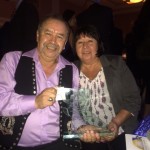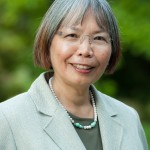 UBC’s Indigenous teacher education program infuses Aboriginal identity and culture into course content, preparing teachers to teach in First Nations schools and the public school system.
UBC’s Indigenous teacher education program infuses Aboriginal identity and culture into course content, preparing teachers to teach in First Nations schools and the public school system.After 40 years and more than 370 graduates, UBC’s Indigenous teacher education program remains as vital as ever
Victor Jim can still remember the names of the people he went to school with 40 years ago.
Caroline Bugge. Melton Charters. Doris Johnson. Edward McMillan. He trips over the last name before Dorothy Chapman comes back to him mid-sentence. “They’re family,” he says.
Jim, a member of Wet’suwet’en First Nation, is one of six people from the first graduating class of NITEP, the Native Indian Teacher Education Program at the University of British Columbia. NITEP turns 40 this month.
“When I arrived at UBC in 1974, there were more totem poles on campus than Aboriginal students,” Jim says.
A lot has changed since NITEP’s inaugural year. Flash forward 40 years — Jim is now a district principal in Prince George, B.C. — and the program has grown considerably, having graduated more than 370 students.
Reaching out
NITEP was first established to address the lack of Indigenous teachers in B.C. At the time the program was founded, the province had few Aboriginal teachers. One reason has been the lack of access to teacher education for those who live in rural or remote parts of the province, both on and off First Nations reserves. Another reason is that Indigenous people wanted a teacher education program that addressed Indigenous education.
To address these issues, UBC began operating field centres throughout B.C. starting in 1974. Currently there are sites in Bella Bella, Duncan and Kamloops. These centres allow NITEP students, many of whom are mothers, avoid the high costs of living in Vancouver. It also allows them to stay closer to family without sacrificing their dreams of an education. For those who prefer to study in the city, the program also has an urban centre on UBC’s Vancouver campus.
Standing tall
NITEP students earn a bachelor of education degree that infuses Aboriginal identity and culture into course content, preparing them to teach in First Nations schools and the public school system.
NITEP’s director, Jo-Ann Archibald, says misconceptions about the program still exist, but they have lessened over the years.
“Some people have an attitude that because it’s an Indigenous program, it’s not as good as a mainstream one,” she says. “Our program has the same requirements as any other bachelor of education program.”
Up until last year, NITEP was the only indigenous education program in B.C. Other universities, like the University of Victoria, have now followed UBC’s lead and offer a similar program.
Filling a need
According to Archibald, the need for Indigenous teachers in B.C. public schools is growing.
“Aboriginal children make up 11 per cent of B.C.’s public school population,” she says. “These kids need to see themselves in the people they look up to.”
Jim agrees, having served as a father figure to many of his students in his career as a teacher. He believes male Aboriginal students, in particular, need more positive role models.
“Many of these kids’ parents are separated or divorced, and a father figure at home is absent,” Jim says. “They look to Aboriginal male teachers for guidance.”
Strong bonds
Although NITEP’s curriculum and cohorts have changed over the last 40 years, the sense of community the program fosters among its students has not.
“I’ve had four other students journey with me since that first class and we’ve bonded and supported each other all the way through,” says Anne Pettet, 37, a third-year student from the Ditidaht First Nation in southern Vancouver Island.
“At my age, being a student was not in the plan,” Pettet adds. “NITEP has given me an opportunity that I would have never thought possible.”


